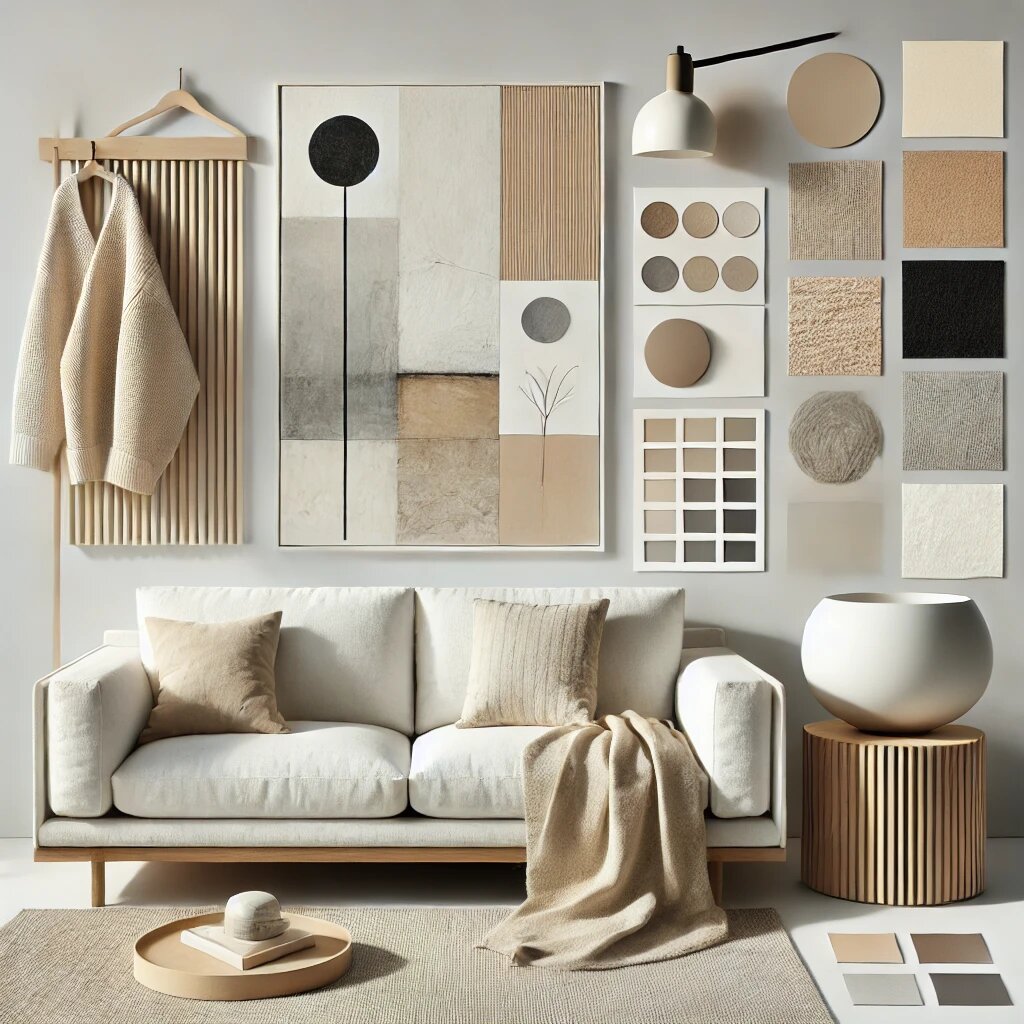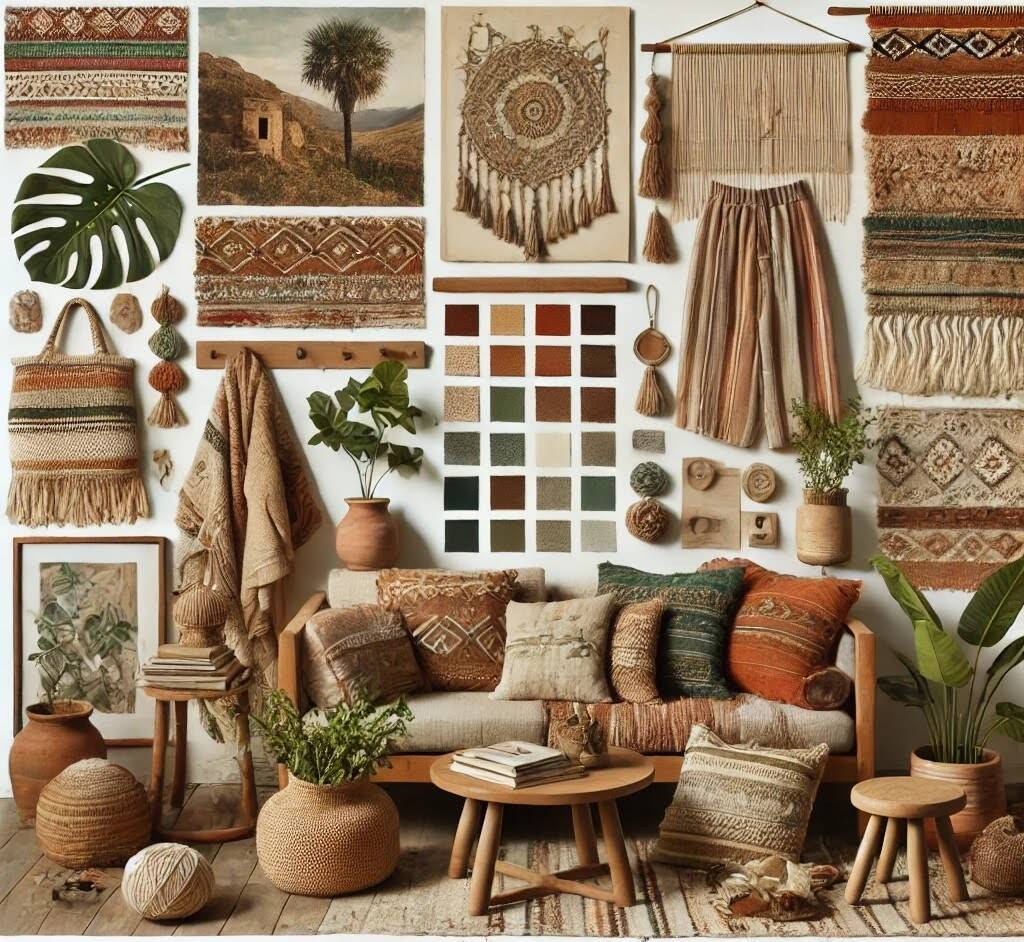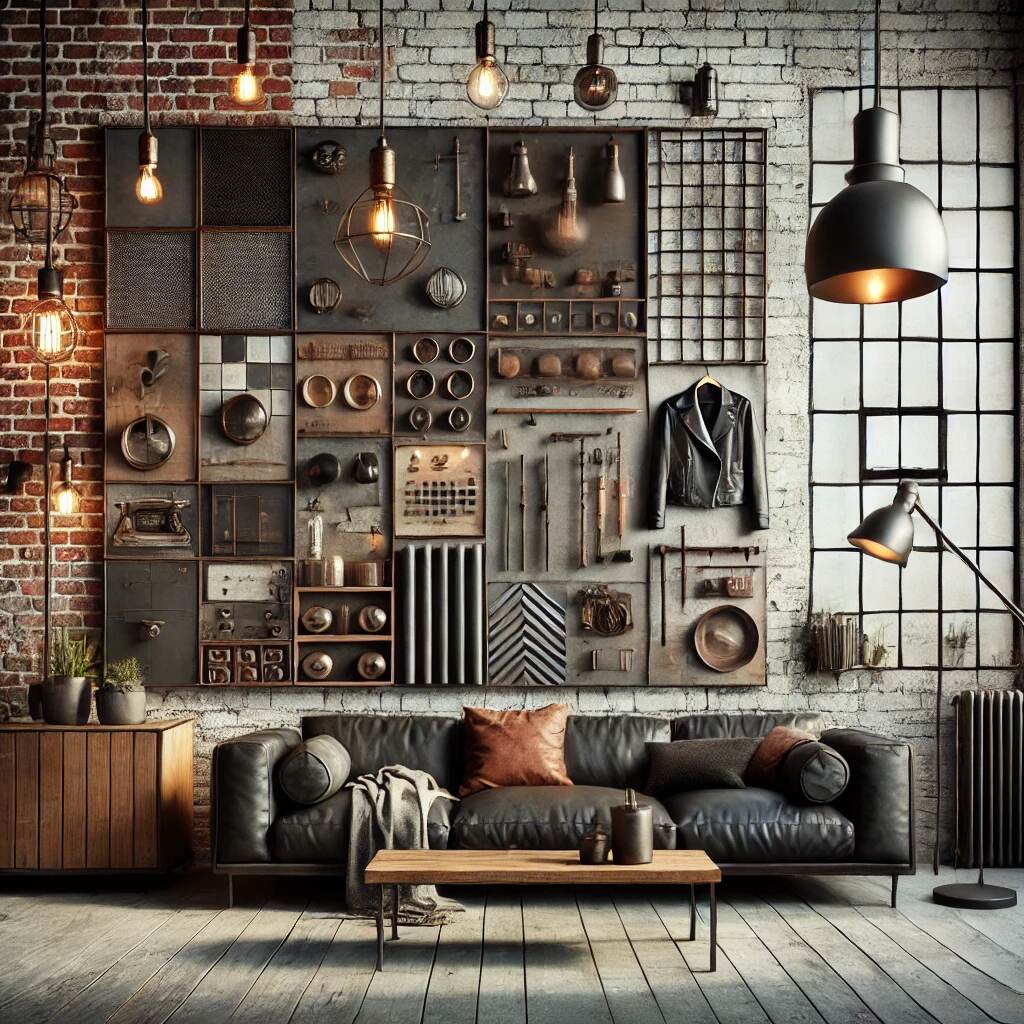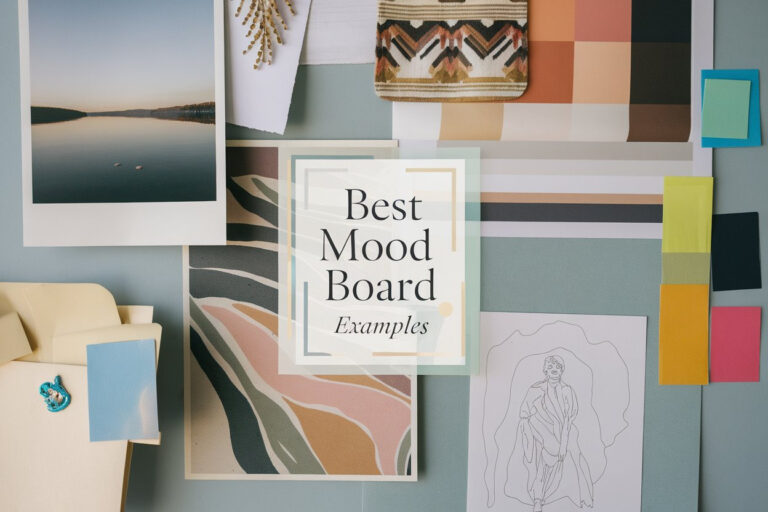In this blog, Ill show you how a mood board can make interior design simple. If you feel overwhelmed by choices, this will help. A mood board organizes colors, furniture, and textures in one place. You can see what works before making decisions.
Ive used mood boards for small projects and full home makeovers. They work for everyone. Homeowners, designers, and DIY decorators all use them. A mood board keeps your ideas clear and helps you avoid costly mistakes.
You can choose a digital mood board for easy edits and sharing. Or try a physical one to work with real materials. Pick what fits your style. Lets get started.
Types of Interior Design Mood Boards Choose Your Method
Digital Mood Boards
Digital mood boards make design planning easy. You can swap colors, furniture, and decor with a few clicks. They help you test ideas before making big decisions.
Want a quick and simple tool? Pinterest lets you save and organize inspiration. Need more control? Canva has easy drag-and-drop templates.
For advanced customization, Adobe Illustrator and Photoshop give you full creative freedom. Morpholio Board is great for professionals who want detailed layouts.
Digital mood boards work anywhere. You can update them anytime and share them instantly. They are perfect if you like flexibility and fast edits.
Physical Mood Boards
A physical mood board lets you feel textures and see real colors. It helps you compare fabrics, finishes, and materials side by side. Seeing everything together makes decisions easier.
You need to start with a corkboard or foam board. Add fabric swatches, wallpaper samples, and paint chips. Print images of furniture, lighting, and accessories. Arrange and adjust until everything feels right.
Layering is key. Place big elements, like flooring and wall colors, at the base. Add furniture and decor on top. Move things around until the design flows. A physical board makes your vision real before you commit.
Key Elements of a Mood Board
1. Theme & Inspiration
Your mood board starts with a theme. What style speaks to you? Modern, Boho, Farmhouse, or Industrial? Choosing a theme helps create a clear vision for your space.
Use real spaces as inspiration. Look at photos of rooms you love. Study their colors, textures, and layouts. Pick elements that match your style and make them the foundation of your design.
2. Color Palette
Color sets the tone for your space. Choose a mix of primary, secondary, and accent shades for balance. A simple, well-planned palette keeps the design cohesive.
Neutrals create a timeless look, while bold colors add personality. Soft tones make a space feel calm, while deeper hues create drama. Pick shades that match your theme and enhance the mood you want.
3. Furniture & Decor
Furniture defines how a room looks and feels. Choose key pieces that fit your theme. A sleek sofa for modern spaces, a rustic table for farmhouse styles, each piece should support your vision.
You can mix textures and materials for depth. A wooden coffee table with a metal lamp adds contrast. A velvet chair with linen curtains brings balance. Thoughtful combinations create interest and harmony.
4. Flooring & Wall Finishes
Floors and walls set the stage for everything else. Choose materials that match your style. Hardwood feels warm, tile is sleek, carpet adds comfort, and concrete creates an industrial edge.
Walls add texture and personality. Wallpaper, wood paneling, or exposed brick bring depth. Painted walls keep things simple. Pick finishes that enhance the space and tie the design together.
5. Accessories & Styling
Accessories bring a space to life. Rugs, curtains, plants, and artwork add texture and warmth. Choose pieces that complement your furniture and color scheme.
Lighting is key. A bold pendant light makes a statement while soft lamps add warmth. Small details, like vases and books, personalize the space. Every element should add to the overall look.
Mood Board Examples
1. Minimalist Mood Board
Minimalist design focuses on simplicity and functionality. It uses clean lines, neutral tones, and open spaces to create a calm and clutter-free environment. Every piece serves a purpose, reducing visual noise.
Soft textures bring warmth to minimalism. Think light wood furniture, linen fabrics, and soft rugs. A well-placed accent, like a black-framed mirror or a statement chair, adds depth without overwhelming the space. Minimalism isn’t about having less, its about choosing with intention.

2. Bohemian Mood Board
Bohemian design is all about personality and warmth. It features layered textiles, earthy hues, and global influences. Each piece tells a story, from handwoven rugs to vintage decor. There’s no rigid structure, just a blend of textures and colors that feel collected over time.
Natural materials define the boho look. Use rattan chairs, wooden tables, and woven baskets to create a relaxed, inviting atmosphere. Mix patterns like Moroccan prints, tribal motifs, or floral designs to add vibrancy. The key is to embrace creativity and make the space feel uniquely yours.

3. Modern Industrial Mood Board
Modern industrial design combines raw, unfinished textures with sleek, modern elements. It often features exposed brick, concrete floors, and metal accents for a bold, urban feel. Dark, moody color palettes like charcoal, deep browns, and blacks enhance the aesthetic.
Balance is crucial. Leather sofas, wooden tables, and industrial-style lighting soften the rugged materials. Edison bulbs, steel fixtures, and open shelving complete the look. This style blends strength and refinement, making it both functional and visually striking.

How to Create a Mood Board Like a Pro?
1 Gather Inspiration & Define Your Vision
Start by collecting images that match your design style. Look at Pinterest, design blogs, magazines, and furniture websites for ideas. Save anything that catches your eye colors, layouts, furniture, and decor. The goal is to gather a variety of visuals to see what resonates with you.
Once you have a collection, refine your vision. Identify common themes in your images. Do you lean toward neutral tones or bold colors? Modern or vintage pieces? Define your style clearly. A focused vision will help you make better design choices and create a mood board that truly reflects your space.
2 Curate & Arrange Your Elements
Now, select the key pieces for your mood board. Choose furniture, decor, color swatches, and materials that fit your vision. Keep it balanced too many elements can feel overwhelming, while too few may lack impact.
Arrange the elements in a way that makes sense. Place larger items, like wall colors and flooring, at the base. Layer in furniture, textures, and accessories on top. Make sure everything flows well together. A strong layout will help you visualize how the final space will look.
3 Review, Refine, and Perfect
Step back and assess your board. Does it feel cohesive? Are the colors working together? If something looks off, swap it out. Small adjustments can make a big difference.
Get feedback from others. Share your board with a friend, a designer, or someone whose style you trust. A fresh perspective can highlight details you may have missed. Once everything looks right, you’ll have a mood board that guides your design decisions with confidence.
Pro Tips for a Stunning Mood Board
A great mood board is clear and intentional. Too many elements create clutter. Choose key pieces that define your vision. Less is more.
Use high-quality images. Blurry pictures make your board look unpolished. Find sharp visuals from design websites and brand catalogs. Clarity helps refine your choices.
Experiment and adjust. Swap colors, textures, and decor until everything flows. A mood board is a creative process make changes until it feels right.
Showcase with confidence. A well-structured board brings ideas to life. Whether for yourself or a client, it should tell a clear design story.
FAQs
How detailed should a mood board be?
It depends on the project. A basic mood board includes key colors and furniture, while a detailed one features materials, finishes, and accessories.
Where can I find high-quality images for my mood board?
Use sources like Pinterest, Unsplash, design blogs, furniture brand websites, and home decor magazines for clear, professional images.
Can I use a mood board for small home projects?
Absolutely! Whether its for a single room makeover or a full home renovation, a mood board helps keep your ideas organized.
Whats the best way to present a mood board to clients?
Keep it clean, simple, and well-organized. Explain how each element fits the vision and provide variations if needed.
How often should I update my mood board?
Update it as your ideas evolve. Design is a process, and tweaking elements ensures your final choices align with your vision.
Conclusion
A mood board is a powerful tool to bring your interior design vision to life. It helps you organize ideas, refine choices, and create a cohesive look before making decisions. Whether digital or physical, a well-crafted mood board provides clarity and confidence in your design process. Start experimenting, trust your style, and let your creativity guide you.

